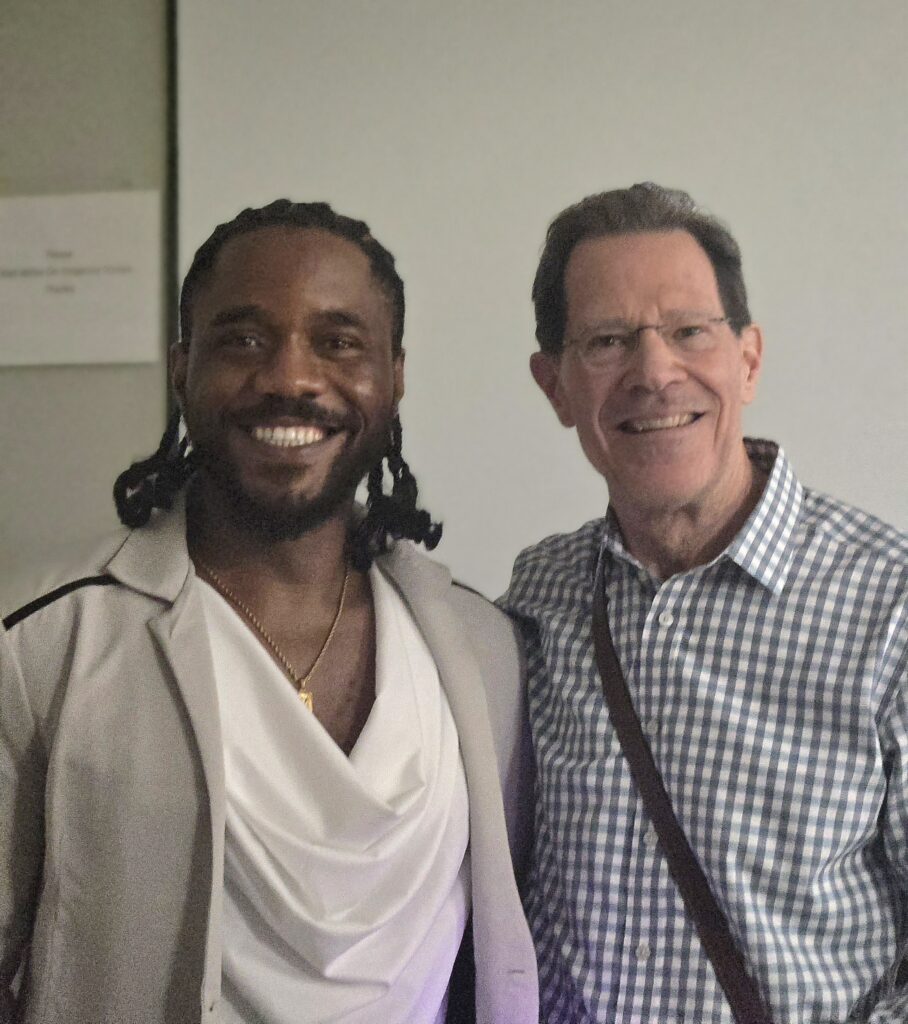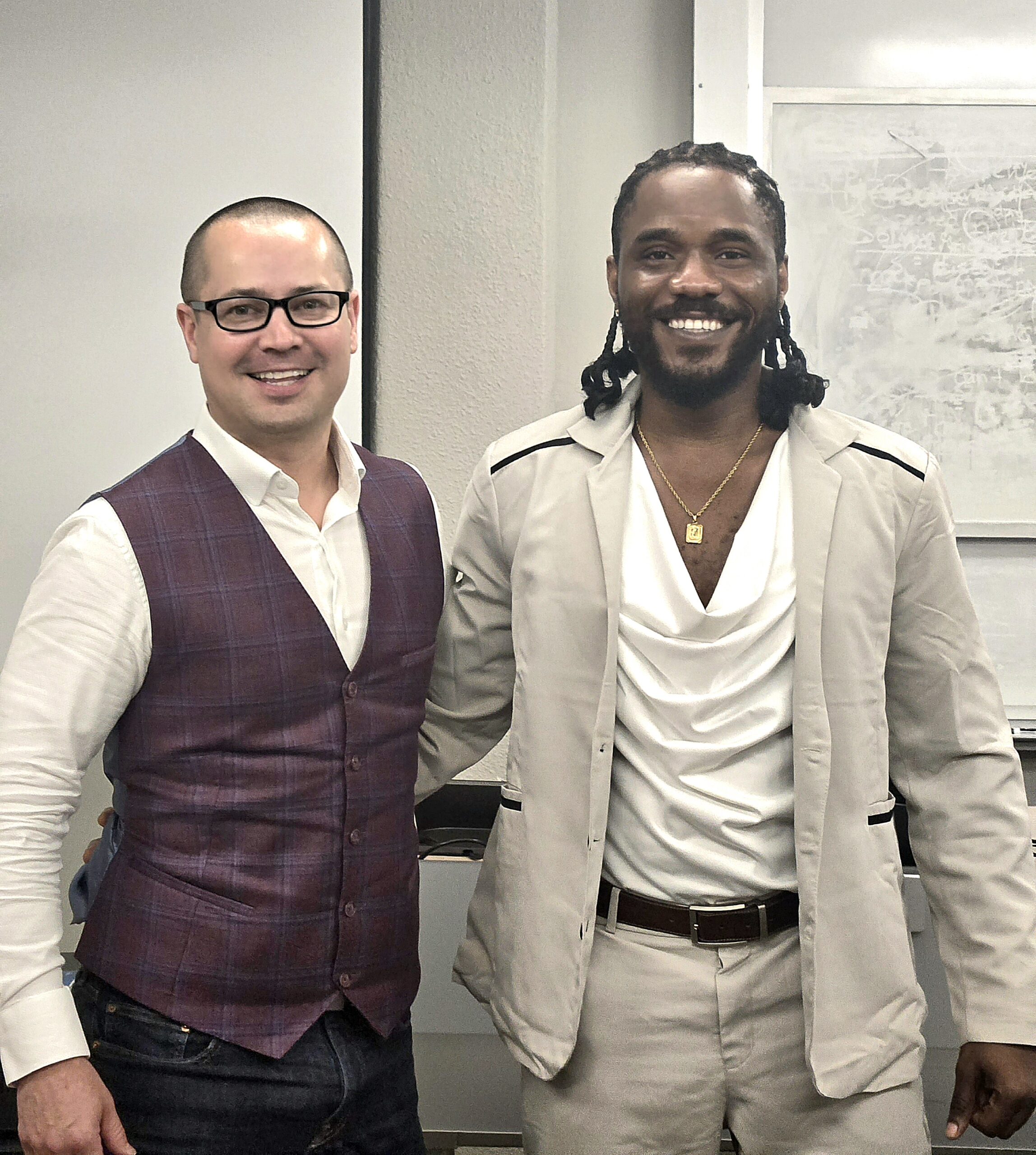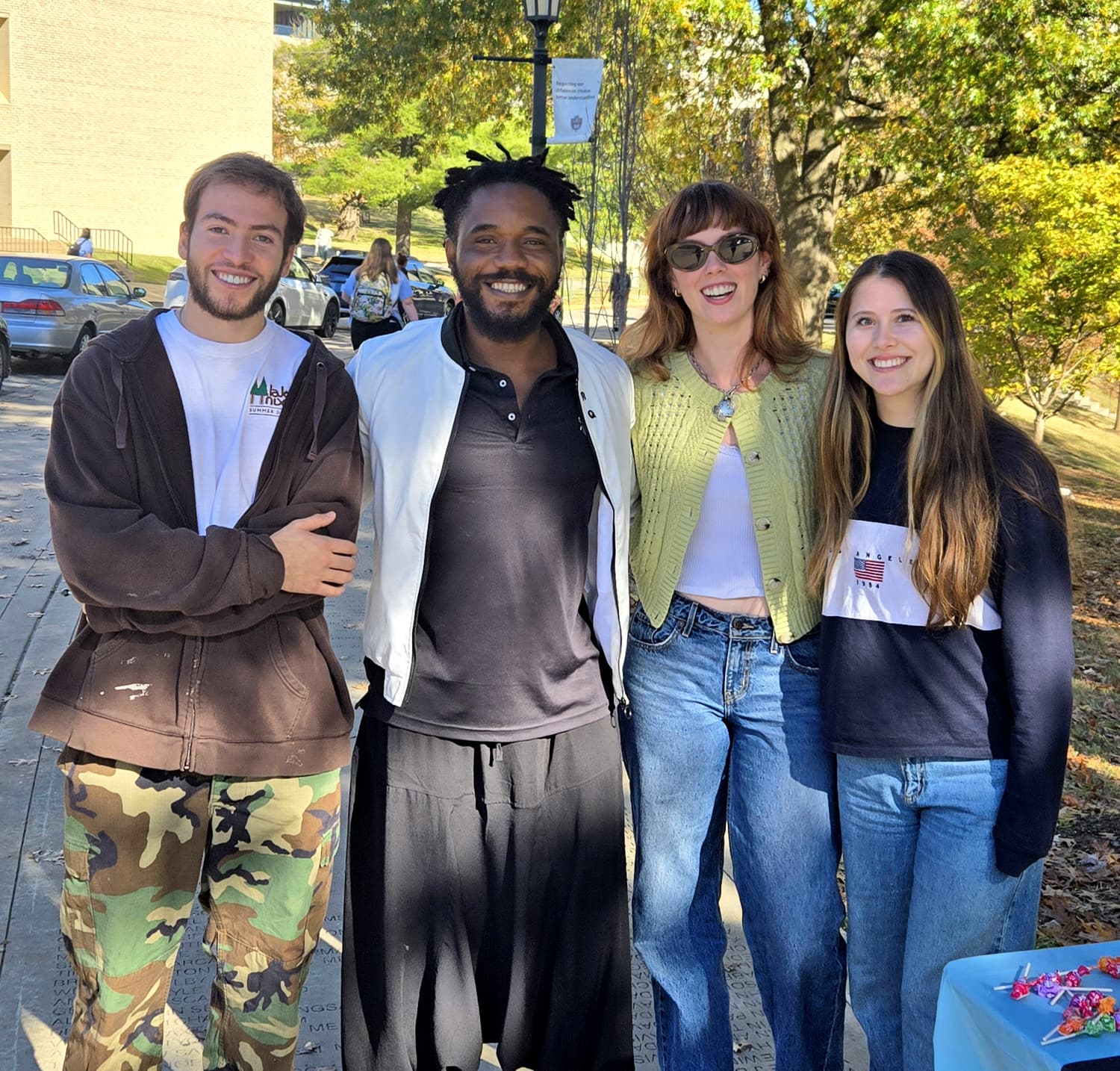Reflection #1
As a teacher, my job isn’t just about delivering content—it’s also about creating the right environment for learning. The first day of class is critical because it sets the tone for the rest of the semester. If students feel comfortable and safe speaking up from the start, they’ll be more engaged throughout the course. One way to build this environment is through icebreakers, like scavenger hunts or interactive activities, that help students connect with each other.
Creating this sense of psychological safety is important because no matter how well I teach, if students don’t feel comfortable engaging, they won’t absorb the material. I also need to be mindful of how I handle student responses, especially wrong answers. Instead of shutting them down, I should acknowledge their effort and encourage further discussion. This way, students won’t be afraid to contribute, even if they’re unsure.
At the end of the day, my goal is to create a classroom where students feel safe to speak, explore ideas, and actively participate. If I can achieve that, real learning will happen.
Reflection #2
My key takeaways from this class are listed below
- Course rules should be clearly explained at the beginning of every semester to avoid student complaints.
- Mandatory attendance is beneficial because students are more likely to show up, and there are no negative consequences to taking attendance. Tools like QR codes and Microsoft Forms can help streamline the attendance process.
- Adherence to deadlines is important to encourage continuous work from students. Exceptions should be made for extreme circumstances.
- Address students’ questions quickly to help them continue learning.
- Treating students with respect while demanding it in return can create a more respectful classroom environment. Addressing students by last names can help with that.
- Avoid playing favorites to maintain fairness.
- Teaching evaluations are crucial, especially early in your career.
- Being well-prepared for class is essential. Incorporate real-world examples, humor, and adjust your approach as needed.
- Unique lecture notes are preferable to publisher-provided materials.
- Be available to help students succeed, even outside of class hours. Respond to emails promptly.
- Strictly punish cheating to create a fair playing field. Creating a case against cheaters can take time.
- Dress professionally to command respect and attention in the classroom.
- Online or blended courses
- Do not leave students alone during online weeks.
- Provide detailed weekly documents.
- Maintain timely communication.
- Consider recording full lectures instead of shorter videos.
- Adjust to student comments, but don’t cater to outliers. Aim to teach to the above-median student.
- Do everything you can to increase your student evaluations, especially as a PhD student.
- Create an environment where you can use your strengths.
Reflections #3
- Good teachers are also good students, requiring them to watch, listen, adapt, and react to the needs of their students. This adaptability might involve changing the pace of a class or adjusting to the different skill levels of students from one semester to the next.
- Effective teachers can teach their subject to anyone, regardless of their background or age, by breaking down complex topics into accessible language and inspiring students. For example, the professor brings a tub of soil with worms and ants to elementary school career days to engage young children.
- Accessibility is crucial; teachers should be available to their students, offering guidance and advice based on their experience. The professor emphasizes an opendoor policy for both undergraduate and graduate students, regardless of whether they are currently in their classes.
- Communication skills are foundational for scientists and educators alike. The professor underscores the importance of communicating results and knowledge through both speaking and writing.
- Educators should act as facilitators, helping students achieve their goals and realize their potential. The professor prioritizes students’ needs, being available to assist them in their academic and research pursuits.
- Leading by example is essential, whether in speaking, writing, teaching, or mentoring. The professor believes in teaching tangible, hands-on skills and emphasizes that educators should embody the qualities they wish to instill in their students.
- Embracing the outdoors as a classroom provides tangible, hands-on learning experiences. The professor uses the outdoors as a classroom, despite its challenges, to teach students about the environment and soil science.
- It is important to respect and embrace nature, encouraging students to overcome any fear of the outdoors. The professor shares that having students who don’t want to get their feet dirty can be a challenge.
- Acknowledging the subjective nature of some environmental topics and encouraging discussion can motivate students. The professor notes that there is often more than one way to arrive at the right answer.
- Building resilience in students is a worthy challenge, preparing them for future endeavors. The professor aims to give students career-changing skills, particularly in areas like soil profile description, which are becoming increasingly rare.
- Real-world experiences, like soil judging contests, provide tangible accomplishments and build a sense of excitement and camaraderie among students. The professor’s soil judging teams have consistently performed well in regional and national competitions, fostering a sense of pride and accomplishment.
- Exposure to diverse environments and conditions, such as snow or tarantulas, can be a life-changing experience for students. The professor shares examples of trips where students encountered new and challenging environments, broadening their perspectives and skills.
- The professor acknowledges the challenges of traveling with students. Students are asked to communicate with their other instructors and the professor sometimes has to proctor exams remotely.
Reflections 4
Key Takeaways
The lecture covers various aspects of teaching Chinese as a foreign language, focusing on the challenges students face and the implementation and benefits of oral exams.
Challenges of Learning Chinese
- Tones:
Chinese is a tonal language where the meaning of a syllable changes based on the tone used. For instance, the syllable “ma” has different meanings depending on whether it is pronounced in the first, second, third, or fourth tone, or with a neutral tone. - Writing System:
Chinese uses characters, each with its own pronunciation and meaning, which students must memorize. While handwriting used to be a major challenge, the focus has now shifted to reading characters due to the use of technology.
Oral Exams in Chinese Language Classes
- Format and Timing:
Oral exams are conducted in the lecturer’s intermediate Chinese classes, typically during the fourth semester. The exam involves students reading a story aloud and answering related questions. - Purpose:
These exams provide students with opportunities to practice and improve their reading, pronunciation, tones, and listening skills. The instructor believes that exams motivate students to learn.
Oral Exam Study Guide
- Content:
The study guide includes:
- A story written by the instructor
- 10-12 related questions
- A rubric outlining the evaluation criteria
- The stories incorporate vocabulary and structures from previous chapters.
- Process:
During the exam, students read the story aloud in characters without assistance and then answer questions. The instructor selects seven questions randomly to test listening skills and prevent rote memorization.
Feedback Method
- Immediate Feedback:
- The instructor provides immediate feedback by highlighting mispronounced words and noting questions asked.
- This allows students to understand their mistakes while the information is fresh.
- Written Feedback:
- The instructor also sends written feedback to students for future reference and improvement.
Principles for Writing Stories for Exams
- Relatability:
The instructor writes relatable and engaging stories to capture students’ interest and aid memorization.- Example: A story about a Chinese international student gaining weight in the U.S.
- Targeted Vocabulary and Structures:
The stories intentionally incorporate vocabulary and grammatical structures that align with learning objectives. - Appropriate Vocabulary:
When introducing new vocabulary, the instructor selects words that fit the students’ level and utilizes characters they may have already learned.
Positive Impact of Oral Exams
- Student Feedback:
- Students report that oral exams help them identify and correct repetitive mistakes.
- They improve reading, tones, and listening skills.
- The exams also reduce anxiety.
- One student noted that knowing what to study and being able to improve through practice greatly reduced their exam anxiety.
- Improved Skills:
- Students no longer fear reading characters.
Benefits of One-on-One Interaction
- Tracking Progress:
- Meeting individually with students allows the instructor to track their progress.
- Safe Environment:
- It creates a safe environment for students to open up and share personal experiences.
- The instructor believes exams should be a tool to build connections.
Applicability to Other Disciplines
- Alternative Assessment:
- The instructor suggests that individual oral exams could be used in other disciplines as an alternative to written papers or exams.
- Principles of Assessment:
- A colleague noted that the instructor’s principles for writing stories are actually principles of writing good assessments.
Classroom Size
- The instructor’s largest class has 22 students.
Reflections #5
Key Takeaway
A comprehensive approach to effective teaching involves thoughtful preparation and delivery, as highlighted by the mnemonic OFFSER. This includes owning the material, framing it, pacing the lesson, selling its importance, engaging students, and repeating key points.
Own the Material:
- Demonstrate a comprehensive understanding of the subject matter.
- Be prepared to explain concepts in various ways and anticipate potential questions from students.
- Customize existing materials to align with your teaching style.
- Be prepared to address questions; it is okay to say “I don’t know”.
- Rehearse before presenting.
Framing the Content:
- Provide context and a clear framework at the beginning of a lecture.
- Outline the topics to be covered and their sequence to help students follow along.
- Framing helps students understand where they are in the lesson, what is to come, and how the topics relate to one another.
- Even a simple introduction, such as “today we’re going to accomplish three things,” can be a helpful way to frame the lecture.
Pacing the Lesson:
- Break the lecture into manageable segments with specific purposes.
- Provide structure and allocate appropriate time for each section to avoid rushing.
- Avoid simply asking “any questions?” Instead, integrate opportunities for understanding throughout the lecture.
- By breaking down the lecture, it allows you to slow down and explain the material more thoroughly, ensuring students can keep up.
Selling the Importance:
- Make the subject matter relatable and demonstrate its impact on students.
- Show students why the material is important to them by connecting it to their interests and future careers.
- Use impactful examples, relatable scenarios, and surprising facts to capture students’ attention.
Engaging the Students:
- Create a learning environment where students are comfortable participating and sharing their thoughts.
- Ask questions that encourage participation and are easy to answer.
- Incorporate varied activities such as in-class discussions, role-playing, competitive games, and video assignments to break the routine and promote greater involvement.
- Gamification and simple simulations can motivate students and foster a competitive spirit.
Repeating Key Points:
- Reinforce information by reiterating important concepts throughout the lesson.
- Summarize what was covered at the beginning and end of class to aid retention.
- Offer different explanations, examples, or perspectives to ensure understanding.
- Repeating yourself helps students absorb the material, even if it feels repetitive to you.
Additional Considerations:
- Use bullet points sparingly in slides, focusing instead on visuals and your explanations.
- Consider alternatives to PowerPoint, such as writing on the board, to encourage active participation.
- Incorporate storytelling and personal anecdotes to make the material more engaging and relatable.
- Be authentic and leverage your strengths as an instructor.
- Model enthusiasm for the subject matter to inspire students.
Reflections #6
Today’s lecture provides a wealth of insights into effective teaching practices, emphasizing the importance of authenticity, continuous improvement, and creating a relevant and engaging learning environment for students.

Authenticity and Style with Substance: The speaker underscores the need to bring one’s genuine self to the classroom, stating that “if you don’t have substance behind style and you’re just there to entertain a classroom, they’ll figure it out fast”. While encouraging instructors to be comfortable with their unique style, he also shared personal feedback from his corporate career regarding potential credibility issues with being overly enthusiastic. This suggests a nuanced approach: embrace your personality but be mindful of the context and the need to maintain credibility. The speaker’s own energetic style is evident, and he acknowledges it as his nature, but advises others that being “over the top” isn’t always necessary to make a real difference. He reinforces that students appreciate authenticity – “they will love it because of who you are uniquely”.
The Crucial Role of Feedback and Adaptability: A significant point is the emphasis on actively seeking and utilizing feedback. The speaker recounts receiving “tough feedback” that “really made a difference” in his development as an instructor and leader. He stresses that this is an ongoing process, stating, “I can still take feedback from any of you at any time and I and I do mean that. I take that to the heart”. This highlights the importance of humility and a growth mindset in teaching, aligning with our previous conversation about continuous improvement.
Building a Strong and Engaging Classroom Culture: The lecture delves into creating a positive classroom culture. The speaker uses the “Walmart Cheer” as an analogy for how shared cultural elements can create a sense of unity and belonging within a large organization and suggests bringing the university’s culture into the classroom. He also emphasizes the simple act of putting a name with a face by encouraging faculty to have their pictures in the directory, as “this is a people oriented business” and it helps students connect with their instructors. The speaker’s high energy and efforts to engage the audience from the start demonstrate his commitment to this aspect.
Practical Teaching Techniques for Enhanced Learning: The speaker offers numerous practical tips to enhance student engagement and the relevance of learning:
- Referencing Course Objectives: He stresses the importance of regularly revisiting course objectives in every class, especially around the midterm, to remind students of the learning journey and their progress.
- Connecting to Job Descriptions: He strongly advocates for linking course topics directly to skills and requirements mentioned in real job descriptions in their field, making the learning more tangible and demonstrating its practical value.
- Incorporating Current Events: Discussing current events like the metaverse and artificial intelligence is presented as a way to keep the material relevant and spark student interest.
- Mindful Presentation Design: The speaker highlights the significance of using official university brand colors (cardinal red, apple blossom, quartz, gray squirrel) and fonts (Myriad Pro) in presentation slides to maintain consistency and reinforce university identity.
- Engaging Introductions: He shares his approach to personal introductions to build rapport with the audience.
Integrating Artificial Intelligence (AI) Thoughtfully: The role of AI in education is explored in detail. The speaker acknowledges its utility for students in understanding complex topics, coding, and proofreading. However, he cautions against its overuse, emphasizing that it should be a tool and not a substitute for developing critical thinking and “thought leadership”. He mandates that AI use must be cited and that assignments should demonstrate direct connections to course topics and personal experiences. The speaker shares his practice of running multiple AI checks on assignments to identify potential plagiarism and encourages open discussions with students about the appropriate use of AI. The discussion includes the need to potentially use “deep research” features in AI tools for more comprehensive results.
Developing a Personal Teaching Philosophy Statement: The speaker strongly recommends creating a teaching philosophy statement as a reflection of one’s core beliefs, purpose, and unique contributions as an educator. He shares his own statement, which focuses on serving students, colleagues, the university, and communities through practical skills development based on the institution’s mission and values. He advises considering end-of-year goals for students and one’s role in the classroom when crafting this statement.
Student Engagement Strategies in Detail: The lecture is rich with strategies to actively engage students:
- Discussion Boards: The speaker advocates for using discussion boards effectively by directing students to write concisely using bullet points and evidence, directly answer the questions asked, and apply an “email format” (issue, impact, recommendation) to develop business writing skills. He emphasizes the importance of fostering original thinking and being mindful of potential AI-generated content. He also details his grading criteria for discussion boards, which include participation, number of postings, thought leadership, links to resources, and quality responses.
- Making Exams Interesting: The speaker shares examples of incorporating real names and humorous scenarios into exam questions to make them more engaging, without sacrificing the assessment of learning. He also discusses the rationale behind using hard copy exams for undergraduate courses to facilitate note-taking and calculations.
- Group Projects: He recommends limiting group size for effectiveness, ensuring clarity on deliverables and rubrics, emphasizing the value of peer evaluations, and highlighting the relevance of projects to interview skills and job applications. He uses “Wheel of Fortune” as a creative method for random team selection. He provides specific examples of engaging group projects, such as selling pet food to a Walmart buyer using real-world data and revitalizing a fragrance brand.
- Guest Speakers: The speaker underscores the value of inviting guest lecturers, both former students and industry leaders, to provide diverse perspectives, networking opportunities, and career advice. He emphasizes the importance of aligning guest presentations with course topics and facilitating logistics.
- Samples and Videos: The use of physical samples (like candy for evening classes) and relevant videos (e.g., how Tabasco sauce is made, career profiles) is presented as a way to illustrate concepts, make learning more dynamic, and provide product knowledge.
- Low-Tech Engagement: In larger classes, the speaker shares an example of using simple methods like cards for engagement.
Emphasis on Communication Skills and Professionalism: The lecture stresses the importance of developing strong communication skills in students, both written and oral. The speaker points out the gap between students’ perceived proficiency and employers’ expectations in areas like professionalism, work ethic, and communication. He encourages students to be attentive to detail in their written work, use spellcheck and grammar tools, and develop critical thinking skills that reflect analysis and conclusions. The introduction of the “blind format” (bottom line, impact, next steps, details) for emails by a military officer resonates with the speaker, who intends to adopt it.
Fostering Student Awareness of Academic Progress: The speaker emphasizes the importance of regularly updating students on their academic standing in the course, providing clear breakdowns of points and their current grades. He connects this practice to the business world, where employees should receive regular performance feedback to avoid surprises. This encourages students to be proactive in understanding their progress and seeking help when needed.
Connecting Course Elements with Job Market Realities: The speaker dedicates a significant portion of the lecture to demonstrating the direct relevance of course content and assignments to real-world jobs. He uses examples from companies like Hershey, Cintas, PWC, and PnG by analyzing job descriptions and showing “day in the life” career videos. This approach aims to motivate students by showing them the practical application of what they are learning and how it prepares them for their future careers.
Classroom Management Strategies: The speaker discusses his “no tech” policy for cell phones in both undergraduate and master’s classes (though laptops for notes are permitted in master’s) as a way to minimize distractions and enhance engagement. He shares an anecdote about enforcing this rule and the importance of consistency. He also mentions using attendance as part of the course grade and utilizing the university’s roster system for sign-in.
Overall, the lecture provides a comprehensive and insightful perspective on effective teaching, blending personal experiences, practical strategies, and a strong commitment to student success. It reinforces the idea that impactful teaching involves a combination of authentic personal style, a dedication to continuous improvement through feedback, the creation of an engaging and relevant learning environment, and a clear focus on equipping students with the skills they need for their future careers.
Reflections #8
The Power of Narrative: Key Takeaways from a Teaching Seminar on Storytelling

This reflection delves into the core principles and practical applications of storytelling in education, drawing from a teaching seminar led by the esteemed Jeff Murray at the University of Arkansas. Professor Murray, a multiple teaching award recipient, His research has appeared in the Journal of Consumer Research, Journal of Marketing, Journal of Public Policy and Marketing, Journal of Business Research, Journal of Marketing Management, Journal of Macromarketing, Journal of Consumer Policy, American Behavioral Scientist, and Consumption, Markets and Culture. Professor Murray serves on the editorial review board and contributes as a reviewer to a number of journals in the discipline.
This seminar was delivered to first-year doctoral students, emphasized the pervasive nature of storytelling and provided a concrete framework for incorporating narrative elements into teaching practices.
The Fundamental Role of Storytelling in Education
Professor Murray began by asserting that we are all storytellers. From emails and text messages to academic articles and lectures, narrative structures underpin much of our communication. He proposed that consciously understanding the structure and importance of stories can significantly elevate teaching effectiveness.
The seminar highlighted several key reasons why storytelling is crucial in education:
- Enhanced Learning: Stories help students learn by making abstract or bland concepts more relatable and easier to connect with. By assigning a story, metaphor, or analogy, instructors can improve the likelihood of students retaining information.
- Attracting and Holding Attention: In an era of numerous distractions, stories are powerful tools for capturing and sustaining student attention. Professor Murray noted that attracting and holding attention has become increasingly challenging, making storytelling more vital than ever.
- Increased Engagement and Involvement: Narratives tend to increase student engagement and involvement in the learning process, fostering a more dynamic and participatory classroom environment.
- Improved Retention and Recall: Drawing on cognitive science, Professor Murray emphasized the deep connection between emotions and memory. Memories experienced under the influence of strong emotion are more easily recalled. By embedding concepts within engaging stories that evoke emotion, educators can significantly improve students’ ability to remember and retrieve information.
Deconstructing the Anatomy of a Story
A significant portion of the seminar was dedicated to understanding the fundamental elements that constitute every story. Professor Murray presented a blueprint of these elements, emphasizing that the art of storytelling lies in creatively managing them so effectively that the underlying structure becomes invisible to the audience. These key structural elements include:
- The McGuffin: This is the device, object, or event that drives the plot and motivates the characters. In the example used, it was a bucket. For a class, it could be the “toolbox” of paradigms, methods, and theories that marketers use.
- Characters: Characters propel the story forward, triggering curiosity and emotion. In the initial example, the characters were a mother and son. In a classroom setting, theorists or even students themselves can become characters in illustrative stories.
- Setting: The location and environment of the story, which sets the mood, influences characters, foreshadows events, and reflects the societal context. For a class, the “setting” can be the students’ minds or a journey through different ideas or historical contexts. The origin story of Starbucks, connecting Seattle with the hippie trail and Moby Dick, served as an example of leveraging setting in teaching.
- Action: What the characters do to achieve their goal, whether explicit or implicit. In the initial story, the action was the son’s journey carrying the bucket. In an educational context, actions can include writing, critical reflection, reading, or working in teams.
- Message: The underlying meaning or wisdom that the story conveys, encouraging reflection on human experience. The message in the example was “the taste of home always brings you back”. In teaching, the message aligns with the learning objectives for the class, lecture, or specific concept.
- Plot: The sequence of events unfolding over time, often involving a setup, journey, confrontation, and resolution. Professor Murray used Kurt Vonnegut’s “man in a hole” plot structure as an example. He also illustrated how the same fundamental plot structure (conventional wisdom challenged and resolved) can be used in both academic research and undergraduate teaching, bridging these seemingly disparate activities.
- Twist in the Tail: An unexpected surprise, often at the resolution, that adds impact to the story. The son’s smile revealing the smiley face on the sand served as the twist in the initial story.
A Practical Five-Step Plan for Turning Lectures into Stories
Professor Murray provided a concrete, five-step process for educators to transform their lectures into engaging narratives:
- What is the Narrative Frame? Define the core story you want to tell, which aligns with the learning objective for the day. For example, the narrative frame could be to teach students about ethnography as a vital marketing research method.
- What is the Conceptual Architecture? Identify the key concepts necessary for students to understand the narrative frame and map out their relationships. For the ethnography example, this included concepts like discovery, origins, small data, thick description, cultural immersion, prediscursive knowledge, participant observation, and empathetic understanding.
- What are the Enabling Stories? Brainstorm shorter, memorable stories that can be woven together to construct the larger narrative and illustrate the key concepts. For the ethnography lecture, enabling stories included the discovery of ethnography by Malinowski, Paco’s work with Walmart, the Crest toothpaste story illustrating empathetic understanding, and even an Elvis Presley song.
- Temporal Sequencing: Determine the most logical and intuitive order in which to present the enabling stories to create a cohesive flow for the lecture. While the order is important for flow, Professor Murray emphasized that the focus should remain on teaching the underlying concepts.
- Write the Story: Develop the lecture, whether as a formal script (as for a podcast) or a more visual PowerPoint presentation, incorporating the enabling stories and ensuring they effectively support the narrative frame and conceptual architecture. Professor Murray stressed that creating a compelling lecture is an iterative process of writing and rewriting.
Bridging Research and Teaching Through Narrative
A particularly insightful takeaway was the idea that storytelling can serve as a bridge between a professor’s research and their teaching. Professor Murray illustrated this with the sociological theory of threshold models, which explores how new social norms emerge. He showed how this same core story, examining the shift in behavior (like everyone suddenly using cell phones), was the basis for Mark Granovetter’s academic article and later, Malcolm Gladwell’s popular book, The Tipping Point. The key is to frame the same underlying narrative for different audiences. This approach can alleviate the feeling of fragmentation between research and teaching, allowing academics to see them as interconnected aspects of their intellectual work.
PowerPoint as an Artistic Canvas
Professor Murray also offered valuable advice on utilizing PowerPoint as more than just a text-heavy presentation tool. He encouraged educators to view PowerPoint as an artistic resource that can be used to enhance interpretive capacities through visuals and a reduced reliance on bullet points. Drawing from resources like Presentation Zen, he advocated for visually engaging slides that complement the spoken narrative rather than simply displaying written content. He acknowledged that early-career professors might need more text on slides as mnemonic triggers, but the ultimate goal is to create a seamless and visually appealing storytelling experience.
Starting Small and Embracing Gradual Implementation
Professor Murray cautioned against feeling overwhelmed by the prospect of overhauling entire courses with storytelling. Instead, he recommended a gradual approach, starting with one favorite lecture and experimenting with incorporating narrative elements. If that proves successful, instructors can gradually apply these techniques to other lectures over time. This iterative process allows for continuous learning and refinement of storytelling skills.
The Universality of Storytelling
In response to a question about whether any subject can be converted into a story, Professor Murray affirmed that any type of subject can be framed as a story. He emphasized that storytelling is particularly crucial for subjects perceived as dry or difficult, as it can make them more engaging and relatable. He shared his work with colleagues teaching marketing research, a subject often receiving lower student evaluations, highlighting how focusing on the human element and the “problems of existence” that the data represents can transform the subject through narrative.
Conclusion
Professor Jeff Murray’s teaching seminar provided a compelling and practical case for the integration of storytelling into educational practices. By understanding the fundamental elements of a story and adopting a systematic approach to incorporating narratives into lectures, educators can significantly enhance student learning, engagement, and retention. The key takeaways emphasize the pervasive nature of storytelling, its powerful impact on memory and emotion, and the potential to bridge the gap between research and teaching through compelling narratives. The seminar encouraged educators to embrace a gradual and iterative approach, viewing storytelling as an ongoing practice that can enrich their teaching and foster a deeper connection with their students.
Reflections #9
PhD Student Survival Guide: Navigating Challenges and Thriving in Graduate School
Balancing Workload and Mental Health
PhD students often face immense pressure juggling research, coursework, and personal well-being. The key to thriving is knowing your limits and managing your workload wisely. Experts recommend:
- Start small and stay consistent
- Avoid taking on too many commitments at once
- Be honest with yourself—and your professors—about your capacity
- Prioritize quality sleep and mental health
Teaching Strategies for New Instructors
Teaching for the first time can feel overwhelming. Here’s how to ease into it:
- Lower your expectations for the first semester
- Focus on mastering the course content
- Avoid overcomplicating your teaching methods early on
- Have confidence—you know more than your students
- Develop a clear, well-structured syllabus
- Adapt your teaching to match students’ experience levels
Research and Productivity Tips
Doing research well requires consistency and thoughtful time management. Consider these strategies:
- Make steady progress every day, even in small amounts
- Stay flexible with your work schedule
- Learn from your advisor’s working style
- Read broadly to sharpen your research instincts
- Take regular breaks to sustain productivity
Networking and Professional Development
Relationships are vital to success in academia. Here’s how to build your network:
- Attend conferences with clear goals in mind
- Connect with faculty and advanced PhD students
- Develop relationships with professors beyond your advisor
- Use department resources to your advantage
- Be intentional and proactive about professional connections
Conference and Socializing Strategies
If you’re introverted, networking can be tough—but manageable. Try these tips:
- Partner with a more outgoing conference buddy
- Plan your networking goals ahead of time
- Attend specific sessions to meet targeted contacts
- Reach out to program alumni
- Start with low-pressure, one-on-one conversations
Work-Life Balance
Protecting your personal well-being is just as important as academic success. Remember to:
- Set and maintain clear boundaries
- Keep open communication with partners and family
- Engage in hobbies or activities unrelated to school
- Take full days off to recharge
- Be both flexible and disciplined in your routine
Final Wisdom
Above all, practice patience and self-compassion. A PhD is a marathon, not a sprint. Trust in your abilities, cultivate strong support systems, and remember—challenges are temporary, but your growth is lasting.
Reflections #10
Teaching Identity: A Profound Journey of Authenticity, Empathy, and Personal Transformation
In an extraordinary seminar that transcended traditional academic discourse, Professor Molly unveiled the intricate tapestry of her teaching identity, offering a deeply personal and transformative narrative that challenges conventional approaches to education.
The Foundations of a Teaching Philosophy

Molly’s journey begins with her foundational belief, inspired by CS Lewis, that wisdom is not solely about individual brilliance but about surrounding oneself with wise individuals and learning from their experiences. Her approach is rooted in a supportive family environment that emphasized three critical principles:
- Learning from Every Interaction
- Her parents taught her that every person, every situation offers a learning opportunity
- Understanding that each student carries unique personal burdens
- Recognizing the complex human stories behind academic personas
- The Power of Personal Narrative
Early Influences and Transformative Encounters
Molly’s teaching identity was shaped by several pivotal encounters:
a) Doug Ashton: The Personalized Learning Mentor
- Knew 300 students’ names by week two
- Personalized learning through individual context
- Demonstrated the power of making each student feel seen and valued
b) George Wynn: A Challenging Mentor
- Initially perceived as confrontational
- Taught valuable lessons about student engagement
- Ultimately played a crucial role in Molly’s unexpected teaching career
c) Ro Debrezzo: The Authenticity Coach
- Encouraged embracing individual teaching styles
- Emphasized the importance of being true to oneself
- Advised pushing boundaries in both research and teaching
Philosophical Pillars of Teaching
Molly’s teaching philosophy emerged through several transformative experiences:
- Adoption and Pedagogical Transformation
- Adopting her daughter Marie from Ethiopia
- Realizing the limitations of textbook-driven education
- Shifting to a more contextual, narrative-driven teaching approach
- Personal Loss and Professional Growth
- Her brother Perry’s unexpected death
- Learning resilience and incremental progress
- Understanding the importance of empathy and human connection
- Authentic Engagement Strategies
- Replacing traditional lectures with interactive experiences
- Using student surveys to understand individual goals
- Incorporating real-world examples and executive insights
- Creating multiple engagement touchpoints
The Anatomy of a Transformative Teaching Identity
Key Components:
- Authenticity
- Compassionate challenge
- Holistic student understanding
- Continuous personal and professional evolution
- Prioritizing human connection over academic metrics
Practical Implementation Strategies
- Classroom Approach
- Personalized learning experiences
- Context-rich content delivery
- Empathetic student interactions
- Flexible, adaptive teaching methods
- Personal Development Framework
- Continuous self-reflection
- Openness to unexpected opportunities
- Balancing institutional requirements with personal growth
- Defining individual success metrics beyond traditional accolades
Reflective Practices for Emerging Educators
Molly’s seminar concluded with a transformative exercise encouraging educators to:
- Map personal teaching values
- Identify core engagement principles
- Develop a unique teaching persona
- Create personalized success metrics
- Embrace vulnerability and authenticity
Broader Implications for Educational Transformation
The seminar transcended individual experience, offering a blueprint for:
- Humanizing educational experiences
- Challenging traditional academic paradigms
- Recognizing educators as holistic mentors
- Prioritizing student growth over standardized metrics
Conclusion: The Infinite Potential of Authentic Teaching
Molly’s narrative is more than a personal journey—it’s a manifesto for educational transformation. It challenges educators to see beyond content delivery, to recognize teaching as a profound human interaction capable of fundamentally changing lives.
Her message is clear: Great teaching is an art of connection, empathy, and continuous personal evolution.
Key Takeaway: Education is not about transferring information, but about inspiring human potential through genuine, compassionate engagement.










Leave a Reply